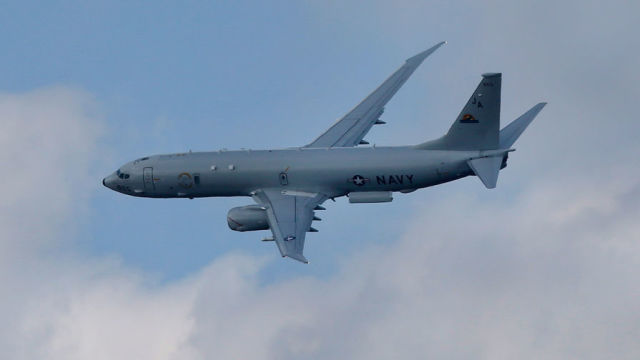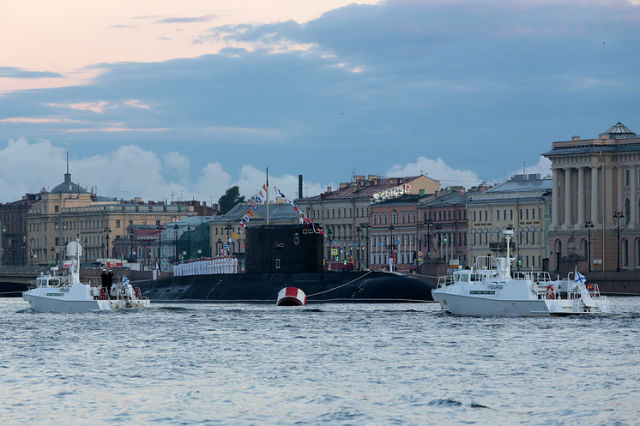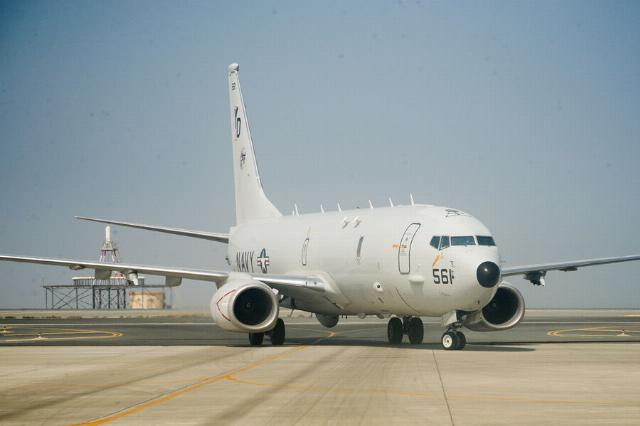The United States has deployed P-8 Poseidon to the borders of Russia to hunt submarines and UAVs.
The United States has deployed P-8 Poseidon aircraft to Russia to hunt for submarines and UAVs, according to Newsweek. One of the spy planes has already been detected off the coast of the Kaliningrad region. What the Poseidons can do and who they are going to "hunt" - in the material of the military observer "Gazeta.Ru", retired Colonel Mikhail Khodarenka.
The United States has deployed P-8 Poseidon anti-submarine patrol aircraft designed to hunt submarines to the borders of Russia. This is reported by Newsweek .
The P-8 Poseidon is designed to detect and destroy enemy submarines in areas of combat service, as well as reconnaissance, participation in naval operations and combat operations both in coastal areas and in the oceans.
Osinttechnical, a company specializing in the analysis of publicly available information, reported that satellite images show two or three P-8 aircraft parked at the military terminal of Gardermoen Airport in Oslo since September 23.
Citing flight tracking data, Osinttechnical reported that the US Navy had sent one of the Oslo-based P-8 aircraft to the Baltic Sea off Kaliningrad.
According to Newsweek, the presence of the US Navy P-8 Poseidon patrol aircraft in Northern Europe is explained by the fact that NATO is strengthening its defenses in the Baltic region against the background of Russia's threat to underwater cables, pipelines and suspicious drone activity in Poland, Denmark and Norway. However, none of the above and the charges against Moscow have been proven at this point in time.
What can Poseidon do?
The Boeing P-8 Poseidon is an anti-submarine patrol aircraft developed under the multipurpose marine aircraft program to replace the Lockheed P-3 Orion.
 |
| U.S. Navy Boeing P-8A Poseidon anti-submarine patrol aircraft. |
| Source: gazeta.ru |
The P-8 Poseidon is based on the most massive narrow-body short-haul passenger aircraft, the Boeing 737. In fact, the P-8 Poseidon is assembled by Boeing on the same line as civilian airliners. And this is very beneficial from an economic point of view, since the fleet does not require so many anti-submarine aircraft, and it is not advisable to create a separate aircraft only for these purposes. It is only necessary to refine the civilian airliner for long-term flights over the sea at low altitudes and equip it with equipment for refueling in the air.
The P-8 Poseidon aircraft is equipped with state-of-the-art electronic equipment that allows it to detect submarines at great depths and distances.
The P-8 is equipped with AN/APY-10 radar, AN/ALQ-240(V)1 radio intelligence systems, an MX-20HD electron-optical camera with an infrared channel, various communication facilities, including the Inmarsat satellite terminal, etc.
The Boeing P-8 Poseidon can carry up to nine tons of weapons, has five internal and six external suspension points for various types of weapons.
What will he be "hunting" for?
Now it remains to clarify the combat and numerical strength of the Baltic Fleet's submarine forces and analyze how the BF submarines threaten the safety of navigation in the Baltic and who the American Poseidons are going to hunt.
The combat strength of the Russian Navy's Baltic Fleet includes only one B-806 Dmitrov submarine of the 877EKM Halibut project. These boats are also often called "Varshavyanka", as they were originally supposed to be equipped with the Navies of the Warsaw Pact countries.
 |
| Diesel-electric submarine "Dmitrov". |
| Source: Anatoly Medved/TASS |
The submarine was laid down at the Krasnoe Sormovo plant on October 15, 1985. During 1986 (under Mikhail Gorbachev), mooring tests of the submarine were carried out, and in the same year the ship was transferred by inland waterways from Gorky (as Nizhny Novgorod was called at that time) to Kronstadt. On September 25, 1986, the submarine was transferred to the fleet. That is, the B-806 ship is already in its fortieth year.
Our Dmitrov is opposed in the Baltic by six submarines of the German Navy and 5 submarines of the Swedish Navy. That is, the ratio is 11 to 1. And then there's the P-8 Poseidon on top.
For example, the last Project 212A submarine was transferred to the German Navy in 2011. The power plant of these ships is air-independent, which allows the submarine to stay underwater for a month and merge with the natural sounds of the sea at a speed of two or three knots underwater. And our only Halibut in the Baltic needs to surface once every four days to ventilate and recharge its batteries.
Swedish Gotland-class submarines have similar characteristics to German submarines. A distinctive feature of the submarine of this project is the Kockums v4-275R Mk III Stirling engine installed in addition to the diesels, using liquid oxygen on board. Gotland's use of a combined air-independent propulsion system allows submarines of this type to stay underwater for up to 30 days instead of the usual few days, which makes it much more difficult to detect them.
So the threat from underwater to the North Atlantic Alliance from a single forty-year-old submarine of the Baltic Fleet is somewhat exaggerated.
The opinion of the author may not coincide with the position of the editorial board.
Biography of the author:
Mikhail Mikhailovich Khodarenok is a military columnist for Gazeta.Ru", retired colonel.
He graduated from the Minsk Higher Engineering Anti-Aircraft Missile School (1976), the Military Air Defense Command Academy (1986).
Commander of the S-75 anti-aircraft missile division (1980-1983).
Deputy commander of the anti-aircraft missile regiment (1986-1988).
Senior Officer of the General Staff of the Air Defense Forces (1988-1992).
Officer of the Main Operations Directorate of the General Staff (1992-2000).
Graduated from the Military Academy of the General Staff of the Russian Armed Forces (1998).
Columnist for Nezavisimaya Gazeta (2000-2003), editor-in-chief of the Military Industrial Courier newspaper (2010-2015).
Mikhail Khodarenok

